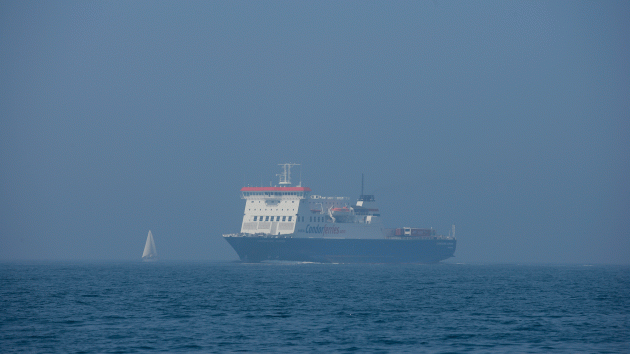James Stevens considers a problem sent in by a Yachting Monthly reader who wants to know how to keep clear of shipping in fog?
Anne is regretting attempting an ambitious passage from Penzance to Plymouth in Flinders, her 8m yacht with her husband as crew. There was a good breeze at the start of the trip, but the wind died and progress has been slow under power.
Instead of arriving at dusk Flinders is approaching Plymouth in the early hours, and, to make the passage harder after a long day, they have just entered a fog bank. Anne is navigating using an iPad. There is no radar or AIS on board. As Plymouth is their home port they know the way in to the west of the breakwater which is marked by a lighthouse with a foghorn. Anne was hoping to pick up the light to guide them in but it is not visible.
They can hear a foghorn, in fact they can hear several foghorns, and Anne is unsure which one is the lighthouse.
Flinders has rounded the Draystone red buoy, and, according to Anne’s iPad, they should be heading towards the breakwater with Knap green buoy coming up on the starboard side. They are now about one mile from the breakwater light and can just detect the loom of the light through the fog.
At this moment there is a very loud fog horn which appears to be dead ahead. What does Anne do now?

How to keep clear of shipping in fog
It is almost certainly a ship, so immediate action is needed. The safest course is a turn to starboard. If in doubt and under power it is always safer to make a starboard turn to avoid a collision. In this case, Anne needs to get out of the shipping channel and the quickest way to do that is to put the green buoy on her port side and hide behind the breakwater.
The chart and almanac will describe how the horn on the breakwater light will blast every 15 seconds. Ships, on the other hand, sound their fog signals every two minutes and sometimes more frequently if other vessels are close.
The ship should pick up the yacht on its radar in calm conditions and will probably slow down and make a starboard turn in order to avoid it. It would have been much safer for the yacht to avoid the main channel and keep outside the buoys marking it. In this case it would have been easier to have entered Plymouth keeping the red buoys on the starboard side of the yacht.
It’s worth considering that in the open sea in rough weather small yachts do not always show up on a ship’s radar.
This was the case when a Sailfish 25 called Ouzo collided with a P&O ferry south of the Isle of Wight at night in 2006. In fog in the open sea, a yacht on a collision course with a ship which is steaming at 25 knots will hear the ship’s fog signal only twice before it strikes.
Enjoyed reading this?
A subscription to Yachting Monthly magazine costs around 40% less than the cover price.
Print and digital editions are available through Magazines Direct – where you can also find the latest deals.
YM is packed with information to help you get the most from your time on the water.
-
-
- Take your seamanship to the next level with tips, advice and skills from our experts
- Impartial in-depth reviews of the latest yachts and equipment
- Cruising guides to help you reach those dream destinations
-
Follow us on Facebook, Twitter and Instagram.





